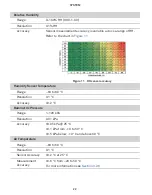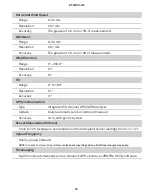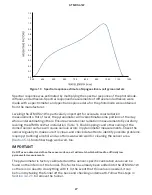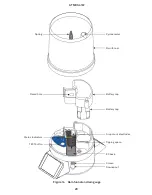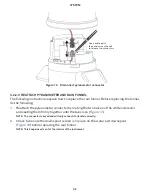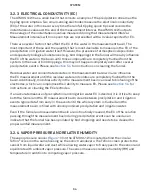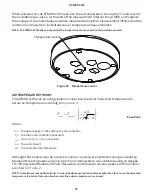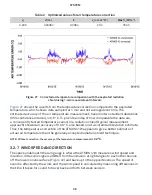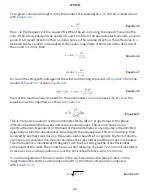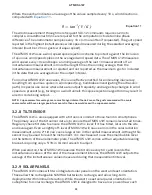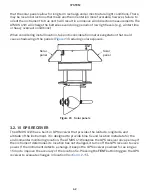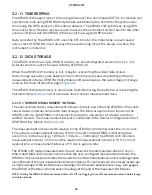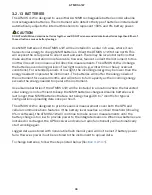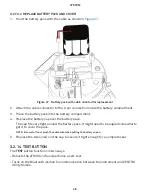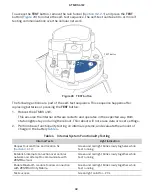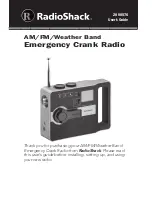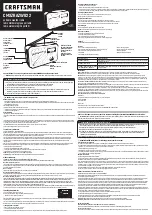
36
SYSTEM
Unlike relative humidity, vapor pressure does not depend on temperature, and is generally
conservative over time and space. The vapor pressure of the atmosphere near the relative
humidity sensor is the same as the vapor pressure at the relative humidity sensor, even if the
relative humidity sensor is not at the same temperature as the atmosphere. Additionally, it
is the vapor pressure of the atmosphere (not RH) that controls the rate of vapor phase water
transport (e.g., evaporation, transpiration, and distribution of water vapor). Therefore, vapor
pressure is a much more useful measure of atmospheric moisture than relative humidity.
The METER ZENTRA system calculates and outputs vapor pressure deficit (VPD) in the
standard data stream. VPD is simply
e
s
(
T
air
)–
e
a
and gives a good indication of evaporative
demand.
When powered on, the ATMOS 41W measures the vapor pressure once every 3 s and records
the instantaneous values. At the end of the measurement interval, the ATMOS 41W outputs
the average of the instantaneous values measured during that measurement interval.
3.2.5 BAROMETRIC PRESSURE
The barometric pressure sensor is located behind the Teflon screen next to the relative
humidity sensor. It measures the atmospheric pressure of the environment where
the ATMOS 41W is located. With a range from 1 to 120 kPa, the sensor is suitable for
measurement across a wide range of elevations, but keep in mind that the magnitude of
sensor output will depend chiefly on the installation altitude with subtle changes caused by
weather.
When powered on, the ATMOS 41W measures the barometric pressure once every 60 s and
records the instantaneous values. At the end of the measurement interval, the ATMOS 41W
outputs the average of the instantaneous values made during that measurement interval.
3.2.6 AIR TEMPERATURE
The ATMOS 41W temperature measurement (
) is made in the center of the
anemometer area where a small stainless steel needle containing a tiny temperature
sensor (thermistor) extends from the middle of the four sonic transducers in the center of
the anemometer. Unlike most air temperature measurements, the weather station sensor
is not covered with louvered plates to protect from solar heating. Instead, it sits in open air,
with nontraditional radiation shielding from the instrument body. The ATMOS 41W is able to
calculate the air temperature more accurately than sensors in traditional louvered radiation
shields because solar radiation and the wind speed are known. These are the two main
parameters that determine the error between measured air temperature and the actual air
temperature. Therefore, it is possible to solve the energy balance to reproduce what the
actual air temperature should be based on the solar load of the body and the convective
cooling of that temperature sensor.

